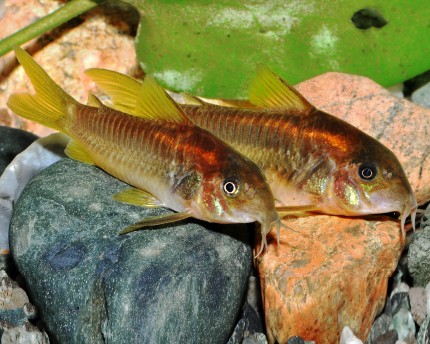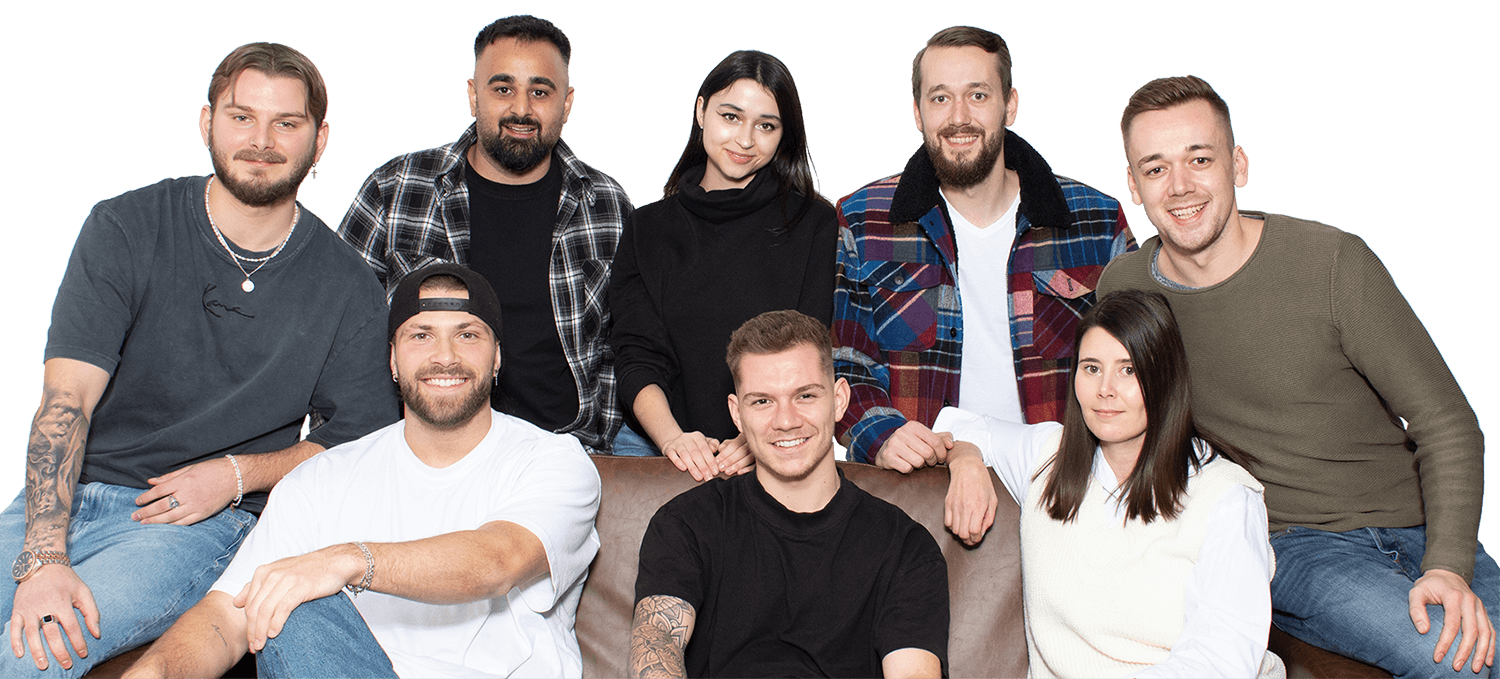incl. VAT plus shipping costs
Ready for shipment in 2 Day(s)
Delivery only innh. Germany and Austria possible.
Switch to the German store
-10% EXTRA-RABATT
auf Deinen gesamten Warenkorb!!
- Item no: 8135
Fast delivery times
All products are in stock with us!14 years of breeding experience
Let our team of experts advise you!High customer satisfaction
from over 3,000 reviews "| Water values: | soft to medium hard |
| with dwarf crabs?: | conditional* (see description) |
| Temperature: | 25-30 °C |
| Behavior: | Active |
| Feature: | Interesting coloring |
| with fish?: | Yes, with peaceful fish |
| Pelvic region: | Below |
| Aquarium size: | 54 l (approx. 60cm) |
| Fish group: | Catfish |
| Breeding: | medium |
| Origin: | South America |
| Visual effect: | Swarm behavior |
| Difficulty: | 2 - Normal |
| with shrimps?: | with dwarf shrimp, offspring may be eaten |
| Diet: | omnivorous - omnivorous |
| Planting possible?: | Yes |
| with snails/shells?: | Yes |
| Final size: | 4-8 cm |
| with large crabs?: | No |
| with crabs?: | No |
Especially its namesake conspicuous and orange stripe gave the Orange Laser Corydorasits name. According to suppositions it comes to the Crydoras aeneus family and was categorized therefore as CW23. Although it differs only slightly from the latter, it got its own position due to the differentiated coloration of the juveniles. These pretty and peaceful bottom dwellers are easy to maintain and also to socialize. In the aquarium they represent a great eye-catcher and provide for lively scurrying on the ground. Although the Orange Laser Catfish is not yet so well known, it can be expected that it will soon become firmly established like its other cousins.
You will receive our Orange Laser Corydoras as German offspring.
Also this great comrade originates from South America, where it is at home in spring river systems of the Amazon. Especially sandy and shallow shore zones are searched for insect larvae, detrius and small worms, but also used for resting.
The sexes of the Orange Laser Corydoras can be distinguished mainly by the somewhat bulkier body structure of the females and the pointed and extended dorsal fin of the males. In the aquarium they can be bred well with some preparation. Live food contributes considerably to the courtship mood, but also larger water changes with different temperatures simulate the fertile rainy season in the rainforest. The females glue their eggs to smooth surfaces from which the larvae hatch. These can be raised with freshly hatched Artemia nauplii, but also slipperfish or infusoria. Alternatively they can be fed with our YoungFeed Baby fish food. To increase the survival rate of the young we recommend to raise them in a rearing aquarium.
With a final size of just under 6 cm the Orange Laser Corydoras are rather smaller specimens and are therefore already suitable for aquariums from 54 liters. Like other Corydoras, they are sociable and social animals that derive their strength from group size. We recommend therefore the group attitude with at least 5 animals, since these care otherwise fast. The substrate should be fine sand, in which the pretty boys can search for food, as in their habitat, without hurting their fine whiskers. Caves and hiding places, but also a dense planting in the background or at the edge area also contributes to their well-being. With the help of Floating plants the aquarium should be shaded in places, as they do not like very bright lighting. However, care should be taken that there are gaps in the floating plant cover , as the animals are intestinal breathers that need to come to the surface regularly to breathe. Ideally, their new home will have some current that they are already familiar with from their habitat. Regular water changes will increase their well-being and also contribute to good hygiene. Regular and good water maintenance is necessary with these pretty dwarfs. At a water temperature between 23 and 25 °C they can be maintained very well. Your water should be soft with a total hardness (GH) between 2-12 °dGH, a carbonate hardness of 2-10 °dKH and a pH of 6.0-7.0.
A socialization of Corydoras sp. Orange Laser is possible with other calm fish. Not too hectic by-fish, also other armored catfish, various small tetras or viviparous tooth carps like mollies, guppies or platies can be kept with a group of these peaceful armored catfish. Of course, the care of shrimp such as the popular Neocaridina, the Amano shrimpbut also of fan shr imps and snails in the same tank is possible. Especially in a so-called black water aquarium or even in an Amazon biotope they come into their own. Dwarf crayfish inhabit the same water zone and can get dangerously close to their scales and seriously injure them, which is why socialization with them or even with the somewhat larger crayfish is not recommended.
Corys are omnivores . Since they live ground-oriented, their food should therefore also be offered to them on the ground. Besides food granules, catfish chips and food tablets, the fish also accept very gladly Frozen food accept. However, live food should always be the first choice, if possible. Various small worms such as Grindal and Tubifex, but also water fleas, cyclops and mosquito larvae are eaten by the catfish.
Our food recommendation: The NatureHolic Catfish Feed for all aufwuchs feeding sucking catfish in the aquarium is a balanced tablet food, which does not cloud the water and the fish like to eat. The catfish tablets also contain NatureHolic active ingredient complexes that provide sucker catfish with everything they need for a strong immune system, healthy growth and great, contrasting coloration.
Our plant recommendation: Use for planting NatureHolic InVitros. These are free of snails, planarians and other unwanted co-inhabitants. Also free of algae spores, bacteria and fungi.
Expert Tip: We recommend for fish keeping the NatureHolic 3 Phase Liquid. The care set offers the best all-round protection for your animals. It ensures optimal conditions for successful breeding and keeping.
| Scientific name: | Corydoras sp. CW23 |
| German Name: | Orange Laser Corydoras |
| Difficulty level: | for beginners |
| Origin/Distribution: | South America |
| Coloration: | golden yellow base color with orange dorsal stripe below dorsal fin |
| Age expectancy | approx. 4 years |
| Water parameters: | GH 2 to 12, KH 2 to 10, pH 6 to 7, temperature 23 to 25 °C |
| Tank size: | 54 liters and up |
| Food | Omnivorous with emphasis on animal food, frozen food, live food of suitable size, flake food, granulated food, special food for armored catfish |
| Breeding | possible |
| Behavior | peaceful |
| Group size | Groups from 5 animals |
| Further information | Ten typical aquarium fish for beginners and alternatives to them, Tips for acclimating fish to the aquarium, Feeding aquarium fish properly - cheap food and what it can do |
- Item no: 8135
Entdecke die Garnelio Welt!
Garnelio gehört zu den größten Onlineshops für wirbellose Aquarientiere weltweit.
Viele Artikel gibt es exklusiv nur bei uns im Shop.













